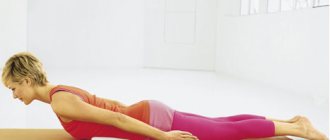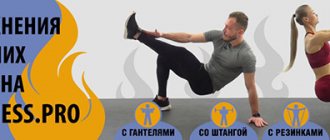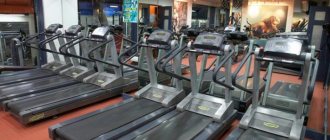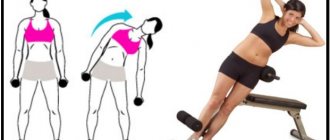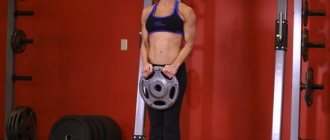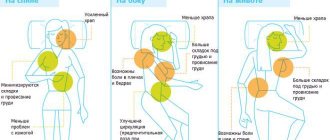A decade ago, fitness training was aimed only at working with different muscle groups and strengthening ligaments.
But such an important component of the human body as fascia has not received due attention. But in recent years there has been a real breakthrough in medicine and sports. Let's look at what fascia is and how to “release” it, while improving your posture and losing excess weight.
What is fascia - signs and causes of its tightness in humans
Imagine a peeled orange. Until the fruit is broken, it will not fall apart on its own. This is all thanks to the thin shell that covers each lobe and connects them to one another. Likewise, fascia, like a protective film, envelops all our organs, blood vessels, muscles, and nerves.
But this is not just a wrapper, but a reliable package of the body under a layer of skin. Fascia sets the position of the internal organs and ensures the sliding of muscles. It is elastic, strong, but at the same time elastic, and changes its position with any muscle contraction. Therefore, we are able to move smoothly, in different planes, and not like robots.
Superficial (cutaneous) fascia
Muscular fascia
Fascia is a dense, fibrous tissue. It consists of collagen and elastin intertwined. In terms of consistency, this fabric is plastic, “slime-like”, and can stretch and change shape if necessary. But this is what fascia looks like in perfect condition.
Unfortunately, many people face problems such as loss of elasticity of the fascia, its tightness, and tightness.
The following signs indicate deviations:
- Periodic pain, muscle spasms, especially after physical activity. 6 best ways to get rid of muscle pain after sports activities
- Poor mobility of muscles and joints, feeling of tightness. Deterioration of body flexibility. Accordingly, the chance of getting a dislocation or sprain increases.
- Poor posture, “distortions” in the body - for example, different leg lengths.
- Often fascial tightness causes radiculitis, migraines, herniated discs and even vascular problems.
Fascia becomes tight not only with age. It can lose elasticity even in a young person. The main reason for this is a sedentary lifestyle, or, conversely, excessive physical activity that does not correspond to the level of training of the body.
Injuries suffered also have a great influence: fractures, bruises, dislocations.
Frequent stress, emotional turmoil, negative thoughts and even lack of water affect the condition of the fascial tissue.
Workout Features
The main problem is that standard abdominal exercises that are popular in fitness do not engage the transverse muscle. This is precisely the reason that even with trained external muscles, the overall aesthetics of the torso is far from ideal (the stomach protrudes, the waist visually becomes larger).
The second problem is the correct preparation of the training program. There are two main ways to work out the target zone:
- After basic abdominal exercises.
- On a separate day.
It is much more effective to allocate a separate day for pumping. This will ensure that it is loaded so that the external parts of the press do not take on most of the load. If you have no time at all, you can train it after the main abdominal block. In this case, the outer muscles will already be tired, which will provide the necessary tension for the inner layer.
To work effectively, it is enough to allocate no more than 2 short sessions per week, but only between meals (so that the stomach is empty).
Takei Hitoshi's fascia release method - a revolution in sports and medicine
Takei Hitoshi is a professor at the Medical University of Tokyo, a physiotherapist by training. He is engaged in scientific research in the field of orthopedic surgery and manual physical therapy. Thanks to scientific books and articles, appearances on radio and television, Takei Hitoshi is known not only in Japan, but throughout the world. The professor is called the “Doctor of Fascia.”
While studying fascia and its connection with pathologies of the musculoskeletal system, Takei Hitoshi came up with a method for releasing fascia .
Many people at the end of the working day experience fatigue, heaviness in the body, and discomfort in the back. This occurs due to the prolonged presence of the fascia in an unnatural position and its compression. The same contractions are associated with the body's reaction to cold.
To release the fascia, it is necessary to regularly warm it up, fill it with energy and keep it in good shape. Special gymnastic exercises developed by the professor help any person free the fascia from cold, tightness and tightness .
Fascia under a microscope; this is how fascia envelops muscle fibers and organ walls
This theory is substantiated from the point of view of anatomy, physiology, and kinematics. In 2007, at a scientific conference at Harvard, a group of Japanese scientists used 3D visualization to show what the inside of the human body looks like if everything except fascial tissue is removed from it. The resulting image showed a three-dimensional mesh with many pockets, sections and processes. This means that fascia envelops every organ, every muscle from the outside and from the inside. When the fascia is pinched, it consequently compresses blood vessels, nerves, muscles, and impairs normal blood flow. The cells do not receive the normal amount of oxygen.
Try a little experiment: clench your fist tightly and hold it for a couple of minutes. After a while, you will notice that the hand of your clenched hand seems to be drained of blood.
This is exactly what happens with fascial tissue. When it is pinched, the blood in this tense area is squeezed out of the arteries and capillaries. Because of this, waste can accumulate in muscle tissue.
What kind of pain are there?
Not long ago, laboratory studies were carried out by scientists who came to the conclusion that pain can occur in three types:
- Sometimes the deep plate of the thoracolumbar fascia is subjected to minor trauma or inflammation, in which case active stimulation of the nerve endings occurs. The fascia in the thoracolumbar region is very close to the skin. During the inflammatory process, all nerve impulses are sent to the brain, and pain occurs.
- If a person is injured, the tissues can become stiff and overloaded. These changes negatively affect the body's posture and mobility, causing not only discomfort but also pain over time.
- Any injury irritates the nerve endings. The nerves branch, and the root itself is located in the spinal cord. The injury causes pain in a specific area of the back.
Rules for exercises to release fascia, contraindications, expected results
To release and restore the fascia, Professor Takei Hitoshi has developed 3 exercises that need to be performed every day.
This complex is especially suitable for office workers who spend a huge amount of time at their desks at the computer. But everyone else will notice the improvements too.
After 14 days of regular training, you can achieve the following results:
- Improved posture : a person will walk and sit with his shoulders back instead of slumped.
- Weight loss by improving blood circulation. The number of kilograms lost will depend on the person’s baseline data and nutrition. But the dynamics towards weight reduction will definitely happen.
- The body becomes more flexible.
- Muscle pain disappears if it periodically bothered a person.
- There is a feeling of energy in the body , as if the muscles were sleeping before, but after the gymnastics they woke up.
You can perform the exercises at any convenient time 1 or 2 times a day .
All movements are made smoothly , measuredly, slowly.
When performing exercises, you need to relax as much as possible and drive away negative thoughts.
If you have any diseases, it is better to first check with your doctor whether such exercises will cause harm.
But the obvious contraindications for gymnastics are:
- Exacerbations of many chronic diseases.
- Presence of a fracture, dislocation, post-traumatic condition.
- Pulmonary tuberculosis.
Is it worth pumping up your back muscles? How to do this correctly?
To strengthen the fascia, doctors recommend working it out well. You can pump up your back muscles even at home; to do this, you need to perform a certain set of exercises every day.
It is important to remember all the rules that exist for these exercises:
1. First of all, it is worth considering that classes should be held regularly. You can conduct such classes twice a week, but you shouldn’t try too hard either. If you do such exercises too often, the muscles will not have time to recover.
2. You should not perform all the exercises at once; it is advisable to do several approaches. Each exercise is done 15 times.
3. Under no circumstances should you start exercises without warming up your muscles.
4. Complexes must change, otherwise the muscles will get used to such constant loads.
Many people are interested in what to do if the thoracolumbar fascia is weak. How to pump it up to forget about back pain? All the recommendations given above will help cope with this problem.
Just three exercises every day to release fascia and lose weight
Exercise No. 1
- Starting position: left hand raised above your head, right hand behind your back. The arms are relaxed, half-bent.
- Bend your elbows at right angles and move your arms clockwise. At the same time, you need to feel how your shoulder blades tense. We freeze for 5 seconds with our arms extended as far as possible.
- We return to the starting position and change hands: now the right one is raised up above the annual one, and the left one is behind the back.
- Again, bend your elbows at a right angle and move your arms clockwise. We freeze for 5 seconds.
The number of approaches for overweight and elderly people is 4-6 times (2-3 times per arm). For everyone else, you can double the number of approaches.
Exercise No. 2
- Starting position: standing in front of a table or window sill, we put our right leg forward, with the knee slightly bent. Left leg in a straight position. Feet pressed firmly to the floor. We place the left hand on the table (window sill).
- We raise our right hand up, pull it towards the ceiling, without lifting our feet off the floor. We freeze in this position for 20 seconds.
- We swap arms and legs: now the left leg is in front, and the right hand is on the table. We pull our left hand up and freeze in this position for 20 seconds.
The number of approaches for overweight and elderly people is 8-10 times (4-5 times for each hand). All others, accordingly, can double the number of approaches.
Exercise #3
- The starting position is the same as in exercise No. 2. The right leg is in front, the knee is slightly bent. The left hand lies on the table. Pull your right hand up.
- We turn our body to the right, and we also try to turn our right hand to the right. We freeze for 20 seconds.
- Bend the left elbow, the forearm should lie on the table or windowsill. The right hand is still up. Hold the position for 20 seconds.
- We change places of the arm and leg, do the same, only now we turn the body to the left.
For older people, it is enough to perform this exercise once on each side. But, if blood pressure is increased, it is better to cancel exercise No. 3 until the pressure stabilizes.
People who are clearly overweight can perform 2-3 approaches in each direction. The rest double this amount.
Fascia connects our body into a single whole. It is closely interconnected with the muscular, circulatory, nervous and other systems.
Today, athletes, fitness enthusiasts and simply people who care about their bodies should train not only their muscles and joints, but also their fascia.


